 Choosing the right textbook for your college classes can be confusing — especially when there are multiple editions available. You might wonder: Is the new edition really different? or Can I use an older one to save money?
Choosing the right textbook for your college classes can be confusing — especially when there are multiple editions available. You might wonder: Is the new edition really different? or Can I use an older one to save money?
In this guide, we’ll help you understand how to choose the right textbook edition for your college courses, how editions differ, and when it’s safe to buy previous versions — especially if you’re looking to save money by purchasing affordable eBooks.
1. What Is a Textbook Edition?
A textbook edition refers to a specific version of a book that’s been updated or revised from its previous versions. Publishers often release new editions to:
Include the latest research or data.
Update case studies, examples, or statistics.
Adjust page layouts or exercises.
Reflect new academic standards or exam formats.
Example:
“Statistics: Concepts and Controversies (10th Edition)” includes revised examples and new visuals not found in the 9th Edition.
While updates are important, many times the core content remains 80–90% identical, which means you can often use older editions — and save a lot of money.
2. Why Professors Require Specific Editions
Many professors assign a particular edition for consistency. That’s because:
Page numbers and chapters match their lesson plan.
Homework questions or case studies may differ slightly.
Some courses use publisher online systems (like MyLab or Connect) linked to specific editions.
Tip: Always check your syllabus or email your instructor to confirm whether older editions are acceptable.
3. When It’s Safe to Use an Older Edition
Using an older edition can be a smart way to save money — especially for general courses. You can safely buy older editions when:
The subject is theoretical, not constantly changing (e.g., Math, History, Literature).
The professor confirms that older editions are fine.
You only need the book for reading and concepts, not online homework.
Example:
“Foundations of Business 6th Edition” and “7th Edition” have nearly identical chapter structures.
You can save up to 70% by choosing the PDF version from CSTBooks.com.
4. When You Should Buy the Latest Edition
There are cases where the latest edition is worth it:
Fast-changing fields like Nursing, Medicine, Law, or Technology.
When the instructor assigns problems from the newest version.
When access codes or online materials are included.
Example:
“Professional Nursing: Concepts & Challenges (10th Edition)” includes COVID-19 updates and new chapters on interprofessional practice.
If accuracy and updated data are critical to your class — always go for the latest edition.
5. How to Compare Different Editions of a Textbook
When deciding which edition to buy, check these factors:
| Factor | What to Compare | Why It Matters |
|---|---|---|
| Table of Contents | Compare chapter titles | To see if core topics changed |
| Page Count | Slight differences are fine | Major gaps may mean new sections |
| Publication Year | Usually every 3–5 years | Longer gap = higher chance of updates |
| Examples/Case Studies | Especially in Business & Law | May affect homework or discussion topics |
Use preview pages on Google Books or Amazon to compare before purchasing.
6. Tips to Save Money When Buying Textbooks
Here are practical ways to get the right edition without overspending:
Buy eBooks instead of printed copies — they’re 50–80% cheaper.
Check for bundle-free versions — you may not need access codes.
Look for PDF or older editions on CSTBooks.com.
Ask classmates if they already have the correct version to share or trade.
7. eBooks vs. Printed Books – Which Is Better for Students?
| Feature | eBook | Printed Book |
|---|---|---|
| Price | Usually cheaper | More expensive |
| Portability | Easy to carry & search | Heavy & limited |
| Access | Instant download | Delivery time |
| Environment | Eco-friendly | Paper waste |
| Study Tools | Highlight, notes, search | Manual notes |
Pro Tip: Combine your eBook with tools like Notion, Kindle App, or Google Play Books for a more interactive study experience.
8. Common Mistakes When Choosing Textbooks
Buying a wrong edition without checking your syllabus.
Paying extra for an access code you don’t need.
Not comparing ISBN numbers between editions.
Ignoring affordable eBook options.
Always double-check the ISBN (International Standard Book Number).
Different editions may share the same title but have different ISBNs.
9. Best Websites to Find the Right Edition
Here are trusted sources where you can find multiple editions of textbooks:
CSTBooks.com – Affordable academic eBooks for U.S. students.
OpenStax – Free open-source textbooks.
VitalSource – Publisher-approved digital textbooks.
Chegg eBooks – Rental and purchase options.
Google Play Books – Preview and buy instantly.
10. Why Buying from CSTBooks.com Helps Students
At CSTBooks.com, we specialize in affordable, instantly downloadable PDF eBooks for college students.
Thousands of titles across Business, Nursing, Psychology, and STEM.
Save up to 80% vs. traditional bookstores.
Instant access after payment — no waiting for shipping.
Environmentally friendly, no paper waste.
Choosing the right textbook edition doesn’t have to be stressful. Once you understand how editions work, you can make smarter, more affordable decisions.
Whenever possible, compare editions, confirm with your professor, and consider using affordable eBooks.
Start by exploring CSTBooks.com — your one-stop shop for academic eBooks designed for college students who want to save money and study smarter.
Read other articles here :
Top Websites to Buy Affordable eBooks for College Students in the U.S
How to Build a Digital Library for Your College Years (Student Guide 2025)
